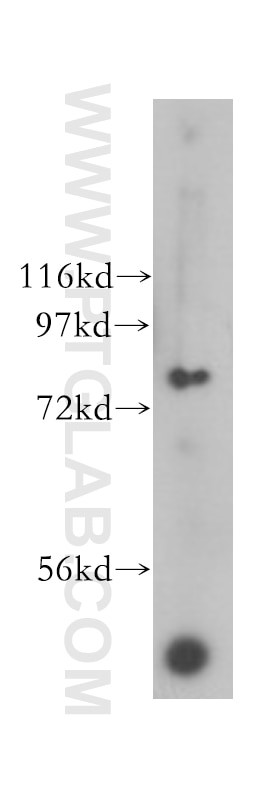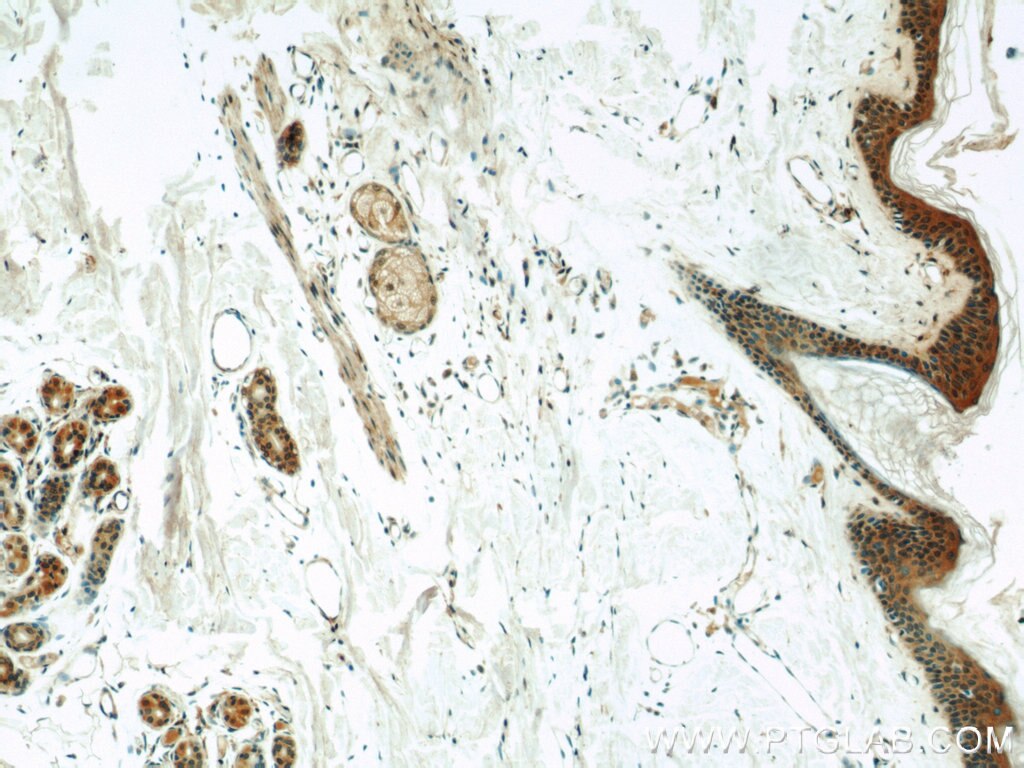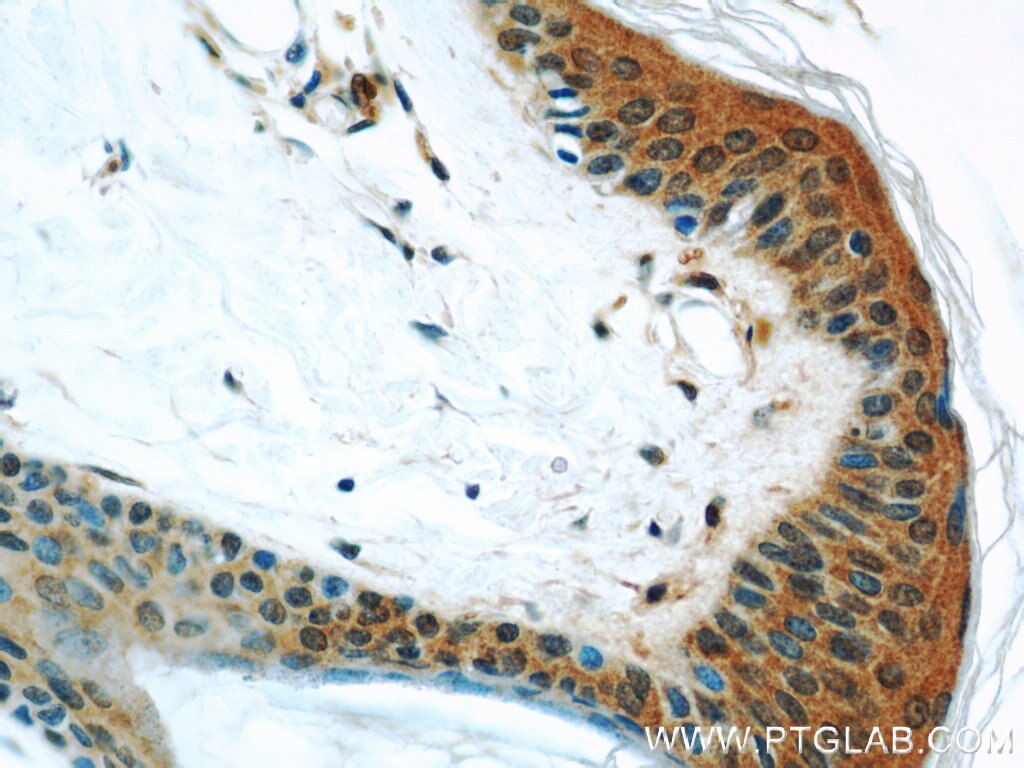Anticorps Monoclonal anti-Cullin 5
Cullin 5 Monoclonal Antibody for ELISA
Hôte / Isotype
Mouse / IgG2b
Réactivité testée
Humain, souris
Applications
ELISA
Conjugaison
Non conjugué
CloneNo.
4A3E9
N° de cat : 60093-1-Ig
Synonymes
Galerie de données de validation
Informations sur le produit
60093-1-Ig cible Cullin 5 dans les applications de ELISA et montre une réactivité avec des échantillons Humain, souris
| Réactivité | Humain, souris |
| Hôte / Isotype | Mouse / IgG2b |
| Clonalité | Monoclonal |
| Type | Anticorps |
| Immunogène | Cullin 5 Protéine recombinante Ag5453 |
| Nom complet | cullin 5 |
| Masse moléculaire calculée | 91 kDa |
| Numéro d’acquisition GenBank | BC063306 |
| Symbole du gène | Cullin 5 |
| Identification du gène (NCBI) | 8065 |
| Conjugaison | Non conjugué |
| Forme | Liquide |
| Méthode de purification | Purification par protéine A |
| Tampon de stockage | PBS with 0.02% sodium azide and 50% glycerol |
| Conditions de stockage | Stocker à -20°C. Stable pendant un an après l'expédition. L'aliquotage n'est pas nécessaire pour le stockage à -20oC Les 20ul contiennent 0,1% de BSA. |
Informations générales
The cullin family proteins are scaffold proteins for the Ring finger type E3 ligases, participating in the proteolysis through the ubiquitin-proteasome pathway. Humans express seven cullin proteins: CUL1-3, CUL4A, CUL4B, CUL5, and CUL7. Each cullin protein can form an E3 ligase similar to the prototype Ring-type E3 ligase Skp1-CUL1-F-box complex. The Cullin-RING-finger type E3 ligases are important regulators in early embryonic development, as highlighted by genetic studies demonstrating that knock-out of CUL1, CUL3, or CUL4A in mice results in early embryonic lethality.
Protocole
| Product Specific Protocols | |
|---|---|
| WB protocol for Cullin 5 antibody 60093-1-Ig | Download protocol |
| IHC protocol for Cullin 5 antibody 60093-1-Ig | Download protocol |
| Standard Protocols | |
|---|---|
| Click here to view our Standard Protocols |




